When you’re Hot, your Hot!
Habanero’s, Ghost Peppers, Cayenne Peppers, Trinidad Scorpions, Hungarian Hots, Jalapenos? From North to South America, from Europe to Australia to India, from Africa to Asia to New Zealand and a lot of small places in between, hot peppers are not only a bright and colorful addition to your garden, but an important part of local cooking, and a necessary ingredient in some of the worlds favorite dishes.
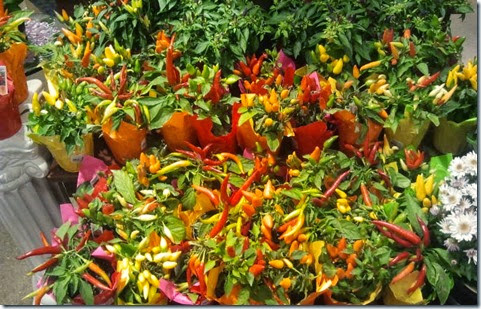
Who can eat a bowl of chili on a cold autumn afternoon without thinking about the fact that although different cultures spell them Chile’s, or chili’s or chillie’s, they all use these delightfully flavorful fruits to add a little bit of pizazz to what might otherwise just be a bowl of beans, or rice, or cabbage?
Of course, that bowl of chili may range from the
‘barely feel the heat’
kind you feed to Grandma, with her tea and crumpets, to the
“Holy-Guacamole!
My mouth is on fire, My tongue is convulsing, My eyes are crossed and bulging, My nose is running, I have sweat dripping off my bald spot, I can’t feel my toes or fingertips! I want some more of that!”kind of chili that is the star of any tailgate party, harvest festival, deer camp or other fall or winter gathering.
Have you ever wondered what makes a pepper hot? Or contemplated why we can rub pepper juice on our skin and feel the heat, but we can’t pour it on our driveway to melt the winter ice?
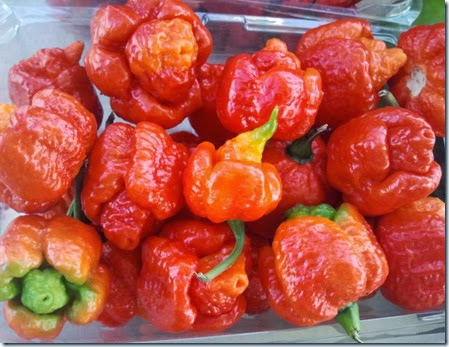
Peppers are very clever plants really (OK, not really, but I like to anthropomorphize my plants.) They have developed defense mechanisms over the years, to help prevent fungus and bacteria and predators from destroying the species. One of those mechanisms is called capsaicin and it is the compound found in pepper spray (hence the name.) Capsaicin is a colorless, odorless, oily, anti-bacterial, antifungal substance found in hot peppers that plays a really mean trick on our nerve endings. Interestingly enough, most of the capsaicin in a pepper is found in the seeds, since it is the seeds that carry on the species, so it is the seeds that need to be protected form predators and disease.
Without getting all scientific and technical, capsaicin binds to the nerve receptors and sends a pain signal to our brain. Our nerve ending believe they are being burned, when in fact no real damage is generally being done. Sometimes, the sensation is so strong, that our bodies defenses kick in, and we see the same swelling, redness, or other reactions that our body will show to sudden heat, even though there is no actual burning that occurs.
Interestingly enough, this is the opposite of the compound found in
A few other things to note about capsaicin. It is believed to not only raise metabolism, but also to raise digestive metabolism, so you burn calories faster, but you also absorb less, because your body processes food faster.
Also, studies have shown that starting your meal with an appetizer high in capsaicin can cause you to eat less in that meal, so hot peppers can be a very valuable addition to healthy eating when weight control is an issue.
When you cook, you may wonder, how do you know what type of peppers to add, and how many of them to use, to get it just the way you like it, just hot enough, but not too hot?
In 1912, an American pharmacist, Wilbur Scoville, developed what he called the Scoville Organoleptic Test (Organoleptic is a fancy word for a test that uses our sensory organs) to measure the amount of heat in peppers.
Scoville extracted the heat components (capsiniods) from peppers and then diluted them in sugar water. Using a panel of five tasters, he would keep adding the pepper compounds a little at a time, until at least three of the panel members could detect the heat. Then a number was assigned to the peppers, based on that dilution.
In essence, for jalapeno peppers, which register roughly 3000 SHU (Scoville Heat Units) heat can be detected when the ratio is one drop of pepper extract to 3000 drops of sugar water. (approximately 2/3 c). If you want to barely register heat, add one drop of pure jalapeno juice for every 2/3 c of chili.
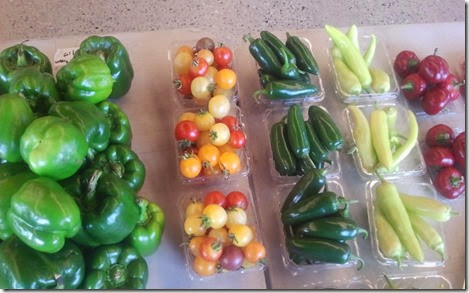
The Scoville test was used as the primary method of rating peppers for years, despite the obvious weaknesses. It depended on human testers, so it was subjective, humans all vary, as does their sensitivity. Moreover, who could work eight hours a day as a pepper tester for very many years without developing a certain immunity or resistance? Many different scientific scales and methods have been developed over the years to replace the Scoville Test, but ironically, we still use SHU’s to describe the heat in a pepper. Modern equipment allows us to analyze and determine the exact amount and concentration of capsinoids in a pepper, but once we know that the number is then converted into a SHU number for comparison.
So, as we discuss Hot Peppers, I will refer to them in terms of SHU’s and now you, as the learned reader of this blog will know exactly what I am talking about.
But first some growing tips:
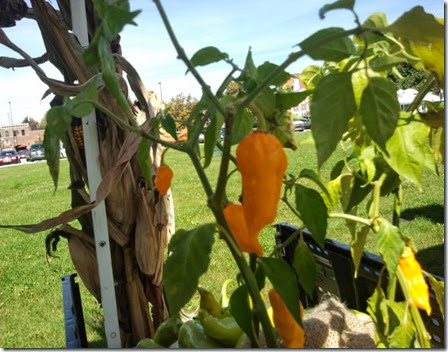
.
Many people have planted their gardens, thinking they were planting hot banana peppers, sweet banana peppers, jalapenos, green peppers, sweet cherry peppers and habaneros, only to discover that all of their peppers were hot peppers. This often leads to someone who believes that since their two peppers cross pollinated, then their tomatoes must be cross pollinating and that is why they grew funny, or their cucumbers crossed with their squash and that is why they have strange shaped cucurbits.
Again, without getting all nerdy-technical, let me assure you that isn’t what happens. When two varieties cross pollinate, the fruits they produce this year will be the fruit of the parent plant, and it is the seeds that they produce which will, if planted next year, produce a different variety of fruits. So why does it happen with peppers? Remember, most of the capsaicin is carried in the seeds, so while the green peppers you grow this year may be sweet bell peppers, the seeds inside could be a cross between a bell pepper and a Habanero. So the results of the cross pollination effect this years crop.
Lesson learned? Plant your hot peppers and your sweet peppers as far away from each other as is practical in the space you have to work with.
There are many varieties available from nurseries, but it is more fun, more challenging and more rewarding to grow your own from seed. Many of the hottest peppers
Your plants will do best if the soil temperature is at least 60 degrees before transplanting them outdoors, this generally occurs two to three weeks after the last frost (of course, sunshine, water and air temperatures will all impact this, so predicting soil temperature is still not an exact science)
Plant your pepper plants far enough apart that they have room to grow and produce, and they don’t fight each other for water and nutrients. Hot peppers require less space than sweet peppers, but should still be spaced no closer than 12” apart for maximum yield. Overcrowding can lead to less and smaller fruits.
Hot peppers have very few natural predators, as ground hot peppers are often used to deter pests from other plants, but be alert for aphids, cutworms rabbits, deer or other pests that may eat the plants before fruiting begins.
Even, consistent watering leads to a better tasting pepper, while dry spells, interspersed with irregular water can lead to woody or bitter peppers
Pepper, and particularly hot pepper or chili flakes, is a spice rather than an herb, because it comes from the fruits and seeds of the plant rather than the leaves. But as we have expanded our product line and started growing other things we have seen more and more demand for a variety of hot peppers, so we grew several varieties this year and plan to grow even more in future years.
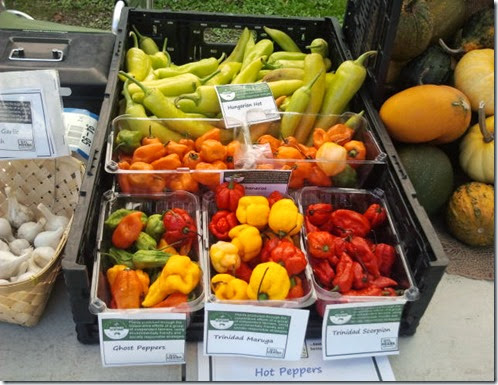
Some of the most popular this year were the ones one each end of the SHU scale. This is a quick overview of the peppers we sold at the farmers markets in 2014.
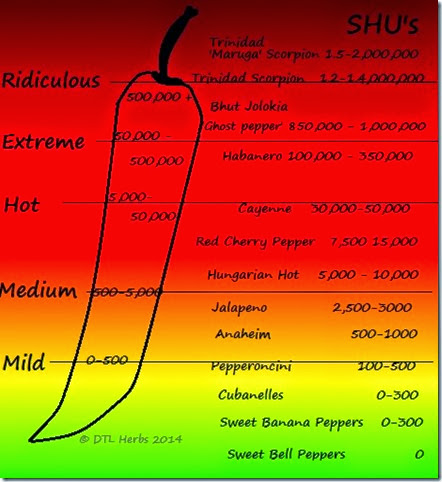
Now that you know more than you ever dreamed you would want to know about hot peppers, the final question everyone asks is “How do I use them?” Jalapenos are easy, you just slice, dice, chop, mince or cut them up into your food.
Or you make a quick poppers by slicing them from stem to tip, removing the seeds, mixing cream cheese, or chorizo, with a little bit of shredded cheddar, stuffing them and roasting them. Personally, I like to wrap a strip of bacon around them before I bake them for 45-60 minutes at 350°
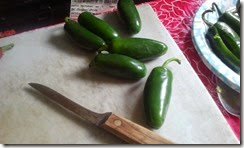
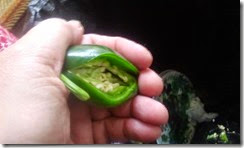
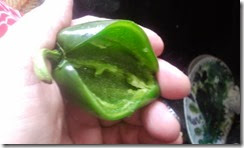
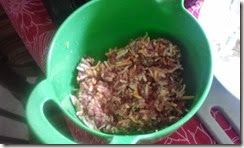

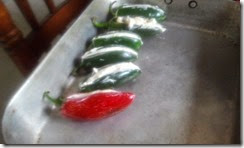
When we get to some of the more exotic peppers, people become intimidated. More than once I have seen someone actually afraid to touch some of the peppers on our table at a market. The media hype, particularly around peppers like the ghost pepper, (Bhut Jolokia), has people so afraid of them that they will never get to explore the wonderful flavor the peppers have and that is truly a shame.
For those who are not ready to cook with the fresh peppers, they can still be dried very easily, and once dried and crushed, can be added to food in small amounts, so as not to overwhelm the timid palette.
When drying peppers, we have found it useful to slit them from stem to tip with a sharp boning knife or fillet knife, to allow moisture to escape and prevent mold inside the pepper. These ghosts and cayennes are all ready to be dried and packaged.
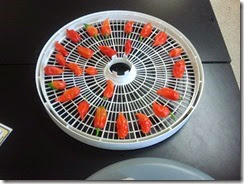
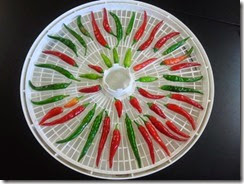
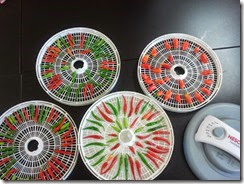
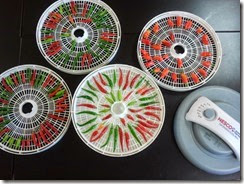
Once dried, peppers can be crushed or ground and sprinkled on food, or added whole to slow cooker meals.
For a little kick in your next pot of chili, break off about half of a dried ghost pepper, and put it in a saucepan with 2 cups of tomato juice. Allow it to simmer all day long, while your chili cooks, then, take out the pepper and add the pepper infused tomato juice to the chili pot.


